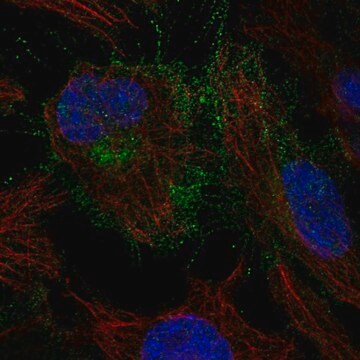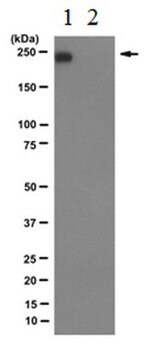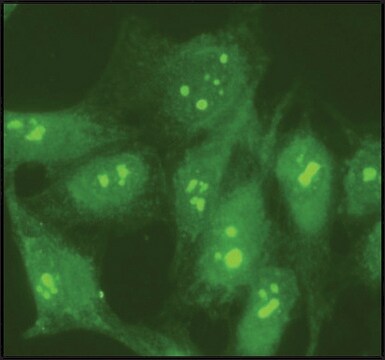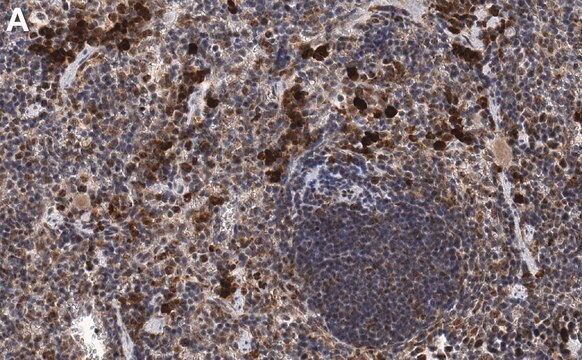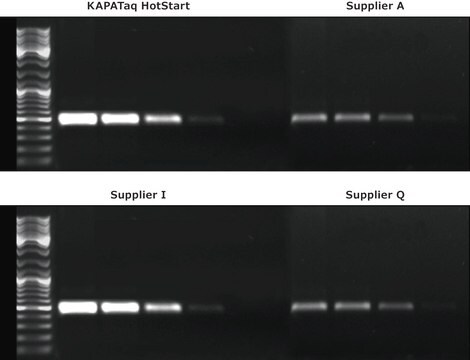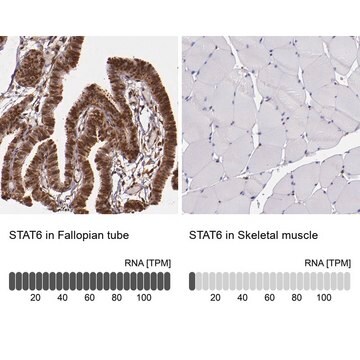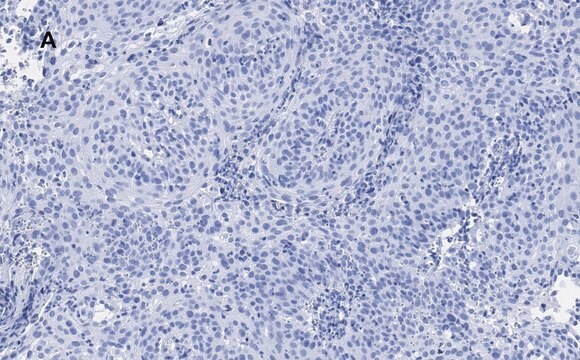MABC587-I
Anti-Nucleolin Antibody, clone 364-5-10-5
About This Item
Polecane produkty
pochodzenie biologiczne
mouse
Poziom jakości
białko sprzężone
unconjugated
forma przeciwciała
purified antibody
rodzaj przeciwciała
primary antibodies
klon
364-5-10-5, monoclonal
masa cząsteczkowa
calculated mol wt 76.61 kDa
observed mol wt ~110 kDa
oczyszczone przez
using protein G
reaktywność gatunkowa
mouse, human
opakowanie
antibody small pack of 100 μg
metody
flow cytometry: suitable
immunocytochemistry: suitable
immunohistochemistry (formalin-fixed, paraffin-embedded sections): suitable
western blot: suitable
izotyp
IgG1, lambda
sekwencja epitopowa
Unknown
numer dostępu Protein ID
numer dostępu UniProt
Warunki transportu
dry ice
docelowa modyfikacja potranslacyjna
unmodified
informacje o genach
human ... NCL(4691)
Opis ogólny
Specyficzność
Immunogen
Zastosowanie
Evaluated by Western Blotting in HeLa cell lysates.
Western Blotting Analysis: A 1:1,000 dilution of this antibody detected Nucleolin in HeLa cell lysates.
Tested Applications
Immunohistochemistry Applications: A 1:250-1,000 dilution from a representative lot detected Nucleolin in human breast cancer and human kidney tissue sections.
Immunohistochemistry Applications: A 1:10 dilution from a representative lot detected Nucleolin in ovarian cancer metastasis-infiltrated human lymph node tissue.
Flow Cytometry Analysis: A representative lot detected Nucleolin in NK-92MIO cells gated and ungated for CD56.
Immunocytochemistry Analysis: A 1:250 dilution from a representative lot detected Nucleolin in A431 and HEK293 cells
Western Blotting Analysis: A representative lot detected Nucleolin in Western Blotting applications. (Kour, R., et al. (2019). RNA. 25(10):1377-1392).
Note: Actual optimal working dilutions must be determined by end user as specimens, and experimental conditions may vary with the end user
Postać fizyczna
Przechowywanie i stabilność
Inne uwagi
Oświadczenie o zrzeczeniu się odpowiedzialności
Nie możesz znaleźć właściwego produktu?
Wypróbuj nasz Narzędzie selektora produktów.
Kod klasy składowania
12 - Non Combustible Liquids
Klasa zagrożenia wodnego (WGK)
WGK 2
Temperatura zapłonu (°F)
Not applicable
Temperatura zapłonu (°C)
Not applicable
Certyfikaty analizy (CoA)
Poszukaj Certyfikaty analizy (CoA), wpisując numer partii/serii produktów. Numery serii i partii można znaleźć na etykiecie produktu po słowach „seria” lub „partia”.
Masz już ten produkt?
Dokumenty związane z niedawno zakupionymi produktami zostały zamieszczone w Bibliotece dokumentów.
Nasz zespół naukowców ma doświadczenie we wszystkich obszarach badań, w tym w naukach przyrodniczych, materiałoznawstwie, syntezie chemicznej, chromatografii, analityce i wielu innych dziedzinach.
Skontaktuj się z zespołem ds. pomocy technicznej